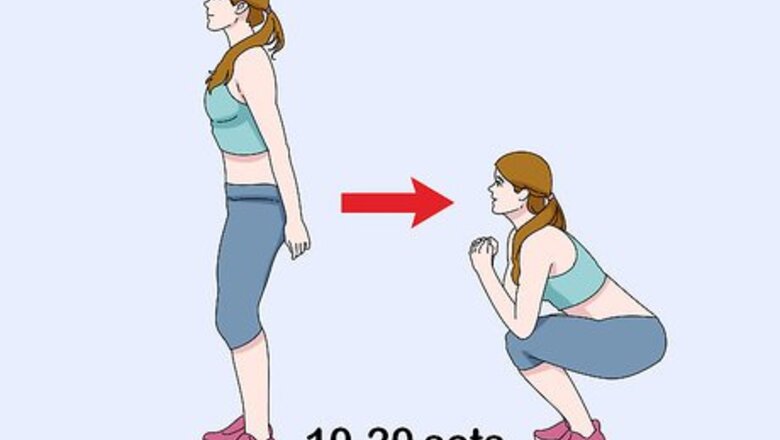
views
Using Strength Training to Improve Your Butt
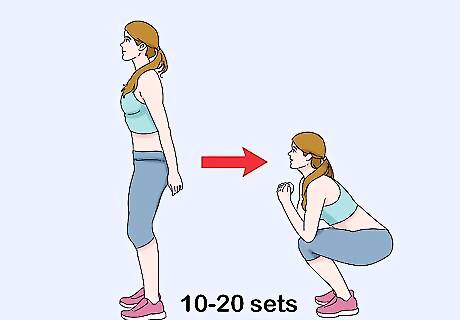
Do squats. Squats are one of the best exercises you can do to tone your backside. To do a squat, stand with your feet shoulder-width apart and bend your knees to bring your backside towards the ground, as if you are going to sit in a chair. Squat as low as you can comfortably go. Make sure your knees remain lined up over your feet as you squat down. Then, stand up again and repeat the exercise. Do 3 sets of continuous repetitions for about 45 to 60 seconds per set. Try sumo squats for a variation that will target different areas of your backside as well. This is the same as a regular squat except you do it with your feet slightly wider than shoulder-width apart and your toes pointing out to the sides.
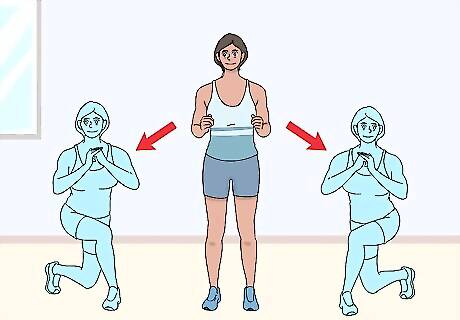
Include lunges. Lunges are also great for toning your backside. To do a lunge, stand with your feet shoulder-width apart and then take a big step forward with one foot and bend your knees so that the back knee goes down towards the ground and the front knee bends at about a 90-degree angle. Make sure to keep your front knee above your ankle. Hold for a second and then step back into the starting position. Do 10-20 repetitions on each leg to complete a set, or do the exercise for 45-60 seconds on each leg. Do between 1 and 3 sets. For more of a challenge, try holding a 5 pounds (2.3 kg) to 15 pounds (6.8 kg) weight in each hand while you do the lunges.
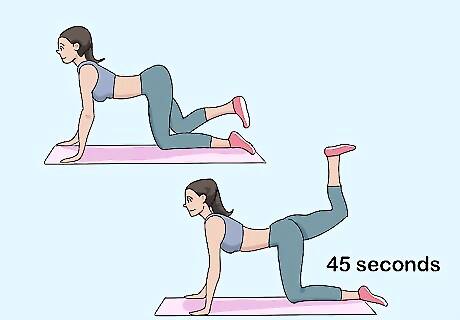
Do donkey kicks. Donkey kicks target the glutes and hamstrings. To do a donkey kick, get down on the ground on your hands and knees. Your shoulders should be over your wrists and your hips should be over your knees. Extend one leg straight out and up towards the ceiling, as if you are kicking a high target with your heel. Then, bring your knee back to the starting position and repeat. Do this exercise 10-20 times on each leg or for 45-60 seconds on each leg. Do between 1 and 3 sets. For more of a challenge, try doing this exercise starting from a plank position.

Include some bridge lifts. Bridge lifts are great for toning your backside and core. To do a bridge lift, lie on your back with your arms straight along your sides and your palms facing the floor. Then, bend your knees and place your feet flat on the floor about shoulder-width apart. Slowly lift your hips up towards the ceiling and squeeze your glutes as you do so. When your body is in a straight line, hold the pose for a few seconds and then slowly lower your bottom back down to the floor. Repeat this exercise for 45 seconds to 1 minute, then rest. Do 1 to 3 sets. Try doing single leg bridge lifts for a more challenging move. Instead of doing this exercise with both feet flat on the ground, lift one leg straight up in the air above your hips and hold it there as you lift.
Incorporating Cardiovascular Exercise for Your Butt
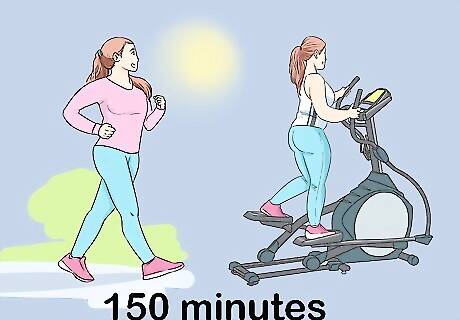
Use a combination of cardiovascular exercises to meet your weekly requirements. Aim for 150 minutes of moderate physical activity, such as walking or using an elliptical machine, or 75 minutes of vigorous aerobic activity every week, such as running or jogging. You can do the same activity in sessions spread throughout the week, or you can get all of your exercise over the course of a couple of days.
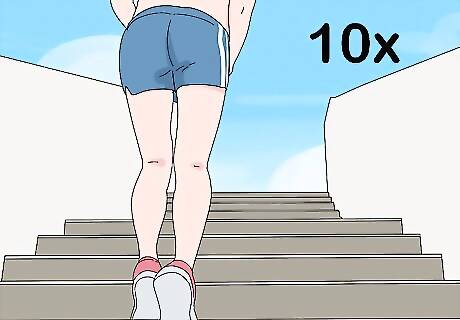
Walk up and down stairs or use a stair machine. To maximize your cardio workouts, you can do cardiovascular exercise that works your glutes while also getting your heartrate up. Walking up and down flights of stairs or using a stair machine is the best way to take care of both. You can even incorporate more stairs into your daily routine, such as by taking the stairs instead of the elevator at work. Since this is a vigorous activity, do a total of 75 minutes per week, or 5 15 minute sessions, to get your weekly cardio requirement.
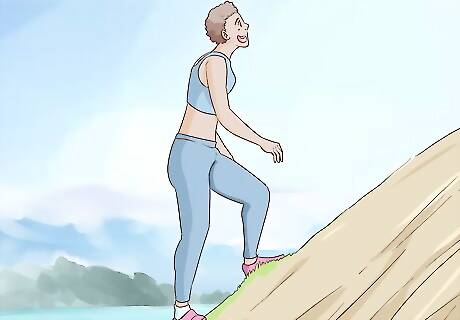
Take a walk uphill. Walking uphill is a close second to walking up stairs when it comes to toning your backside. Try replacing your usual walking route with one that includes some hills, or use the incline setting on the treadmill to simulate hills. Some treadmills have a hill program, which will automatically adjust the incline at intervals to simulate a hilly walking route. Get 5 30 minute sessions per week.
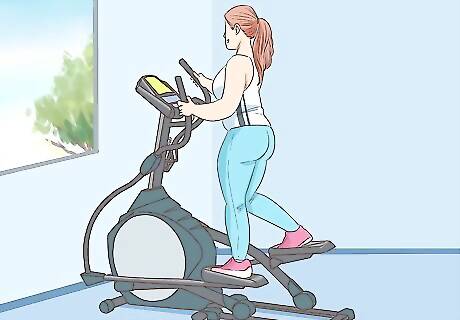
Use an elliptical walker. This type of cardio is not as effective for toning your butt as stairs or uphill walking, but it's better than walking or running on flat terrain, and it's a good low-impact option if you have bad knees. Start with the resistance on the lowest level, and then adjust it up as you build strength. Aim for 30 minutes 5 times per week.
Altering Your Diet to Support Butt Sculpting
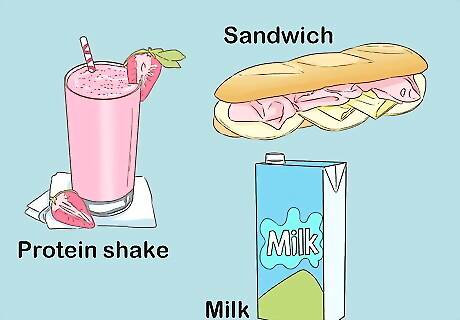
Add calories if you are underweight. If you are underweight, then you may not have enough fat and/or muscle to create a defined backside. You may need to find little ways to increase your caloric intake, while still eating healthy. For example, you might add a couple of protein shakes in between your meals, or find ways to add calories to foods you normally eat, such as by eating an apple with almond butter, adding extra meat and cheese to your sandwich, and switching to whole milk.
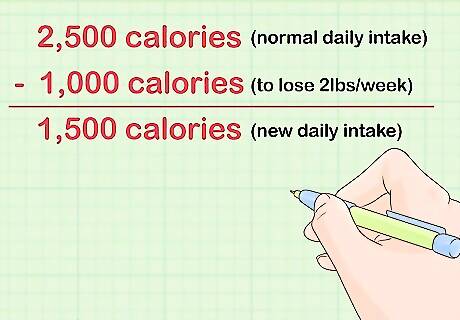
Subtract calories if you are overweight. If you are overweight, then you may need to lose some weight to allow the gluteal muscles you build to show through. To lose weight, you need to create caloric deficit. This means that you take in fewer calories than you burn. If you burn 2,500 calories per day and eat only 1,500 calories per day, then you should see a weight loss of about 2 pounds (0.91 kg) per week. This is because 1 pound (0.45 kg) of fat is equal to 3,500 calories. Make sure that you cut calories in healthy ways. Choose lower calorie options, such as vegetables and low-fat dairy. Avoid skipping meals because you will likely end up overeating later on. Also, measure your food portions and stay within the recommended serving sizes.

Include enough protein in your diet. Protein is essential for building muscle, so make sure that you are meeting your protein needs every day. You need about 0.37 grams of protein for every pound of your body weight. For example, if you weigh 100 pounds (45 kg), then you would need to get 37 grams of protein daily. Choose lean protein, such as skinless chicken and turkey, tuna packed in water, and low-fat cottage cheese.




















Comments
0 comment